CO-Existing with Wildlife
Los Angeles is a densely packed metropolis with a population of over 10 million in an area of over 4700 square miles. As people flock to the area for its beautiful beaches, phenomenal weather and scenic landscapes, they come in greater and greater contact with animals, having a deleterious effect on wildlife.
Coexistence begins with the understanding of how to share our communities with wild animals. In order to do this, we educate individuals about the animals in their environment and provide solutions to existing problems, such as:
For species-specific recommendations for coexisting with wildlife, visit the Animal Profiles page.
Rodenticide Poisoning
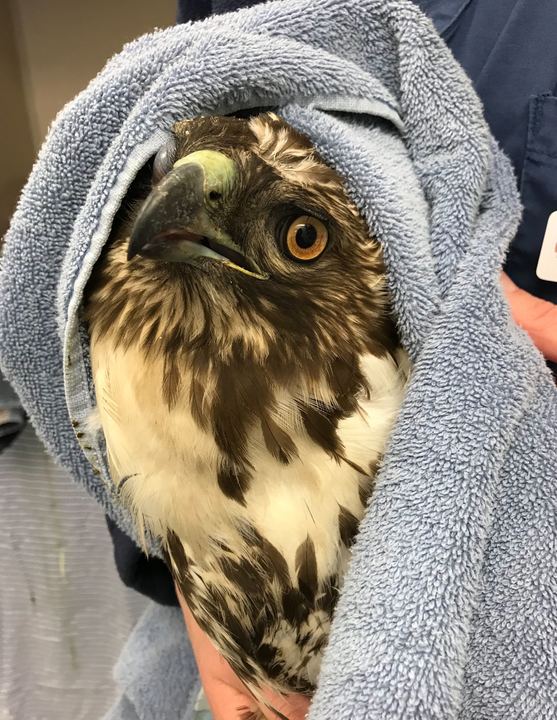
Rodenticides hurt many species of wildlife, including hawks.
In 2019, California Wildlife Center treated 44 animals suffering from rodenticide poisoning, a 600% increase over the previous year. These animals consisted of rodents, birds of prey, and large predators such as coyotes and bobcats. Of these animals, only 17 percent survived to return to the wild.
Rodenticide poison is commonly seen in black plastic boxes placed by pest-control companies. The toxin is an anticoagulant that prevents blood from clotting. Victims bleed to death either externally or internally. The poison is not immediate and may take many days to kill the impacted animal. During that time, the poisoned rat, mouse, or even squirrel, may wander some distance from the poison. The animal may become prey to a hawk, owl, coyote, or bobcat. The toxins in the rodent then transfer to their predator, causing that animal to now suffer the effects.
California Wildlife Center has treated hawks with a red blood cell count of less than ten percent because they are bleeding out through a small scratch on their toe. CWC has also cared for coyotes and bobcats affected by mange, a parasitic mite that affects the skin and leads to skin infection, hair loss, and eventually debilitation and death. Rodenticides appear to be causing heightened severity of disease caused by this parasite by impeding the immune system.
How can you help?
Do not use rodenticide poison. Use exclusion techniques to remove mice or rats from your home. This involves humanely removing the rodents and sealing up their access points. If you hire a pest control company, make sure they use exclusion rather than poisons.
If you find an animal you think may be suffering from rodenticide poisoning, contact your local licensed wildlife rehabilitator (CWC 310-458-9453) immediately.
Window Strikes
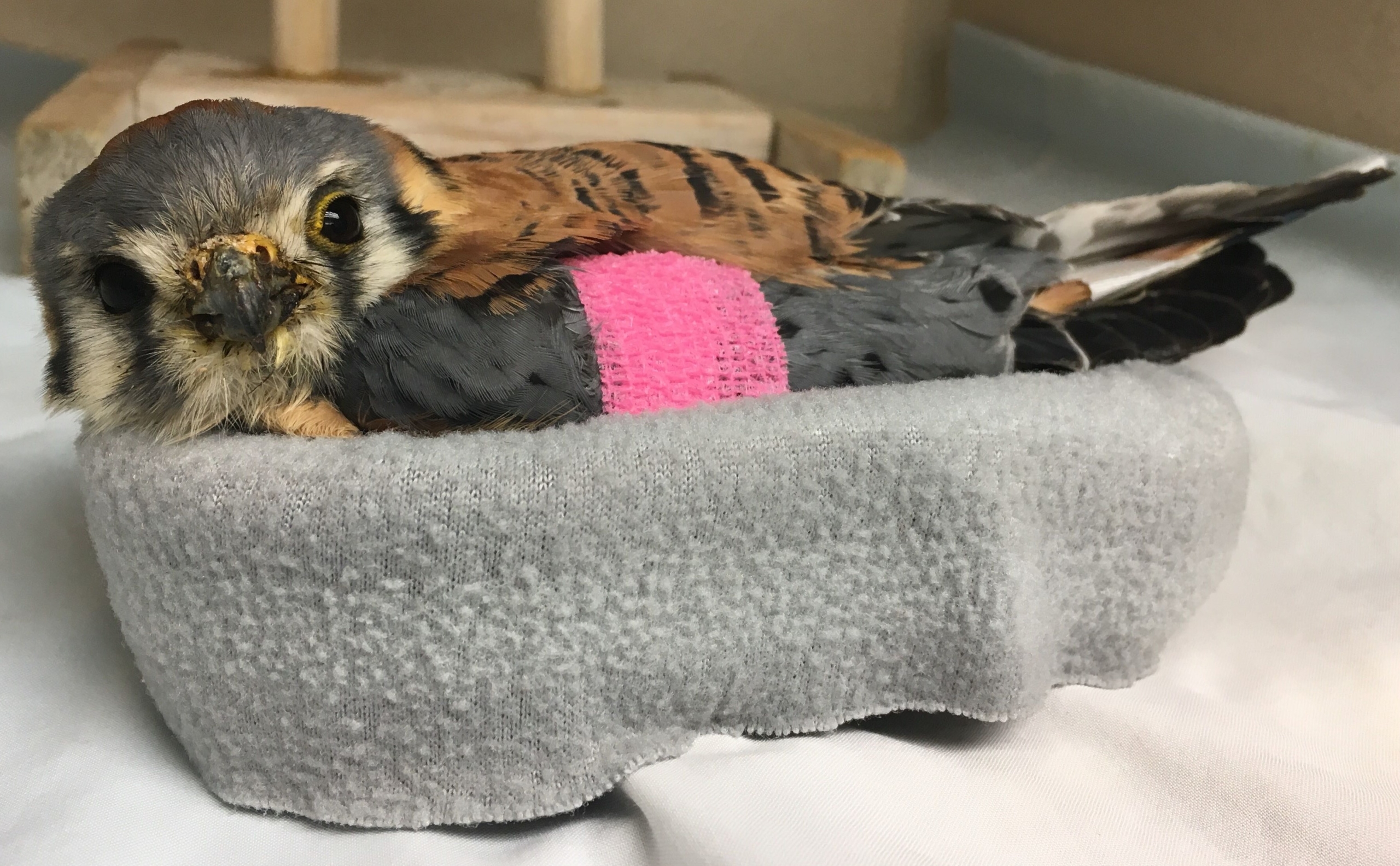 600 million birds are killed in the United States each year through window strikes. Birds cannot see that the window is a solid object and fly into it. Even small windows can be a problem because birds often look for narrow escape routes when being chased by predators. A bird may also fly into glass because a building’s surrounding vegetation is reflected onto the surface of the windows, or there are plants inside that the bird can see and attempts to fly into it. Glass walls installed around properties and on balconies are especially troublesome for birds.
600 million birds are killed in the United States each year through window strikes. Birds cannot see that the window is a solid object and fly into it. Even small windows can be a problem because birds often look for narrow escape routes when being chased by predators. A bird may also fly into glass because a building’s surrounding vegetation is reflected onto the surface of the windows, or there are plants inside that the bird can see and attempts to fly into it. Glass walls installed around properties and on balconies are especially troublesome for birds.
California Wildlife Center receives dozens of birds each year with eye, head, and shoulder trauma from window collisions. Not all birds are fortunate enough to recover from window strikes. Most are taken by predators while in a stunned state, and others may stumble off and perish while hidden from view.
How can you help?
If you have windows that birds are drawn to, there are a few options to prevent collisions. By far the easiest remedy available is bird tape. This reflective tape gives the window an appearance that resembles a solid structure. Other options available are “bird-proof” glass and adhesive films that can be applied to give the window the appearance of impermeability. Please remember always to keep bird feeders away from your windows.
If you witness a bird striking a window, there are a few things you can do to help. Quickly find a box suitable for the bird’s size that can be closed. Place something soft in the bottom, such as an old t-shirt or a towel, and puncture the box several times to provide adequate ventilation. Gently pick up the bird using your hands and quickly place the bird in the box, closing it immediately. If it is a larger bird, you may cover it with a towel when you pick it up to aid in its capture and to protect you from a bite. For birds of prey, such as hawks or owls, never attempt to pick them up with bare hands. Turn your box sideways and try to push the bird into the box using a broom or similar tool. For larger birds or birds of prey, keep the bird somewhere dark and quiet and call CWC at (310) 458-9453. If it is a small songbird that struck your window, you can bring the bird inside to a quiet room for two hours. After that time, go outside and open the box. Sometimes the bird is only stunned and needs a little time to recuperate in a safe place. In this case, the lucky bird will fly out of the box and your work is done! If the bird is unable to fly or stand after this time, please contact CWC immediately.
Glue Traps
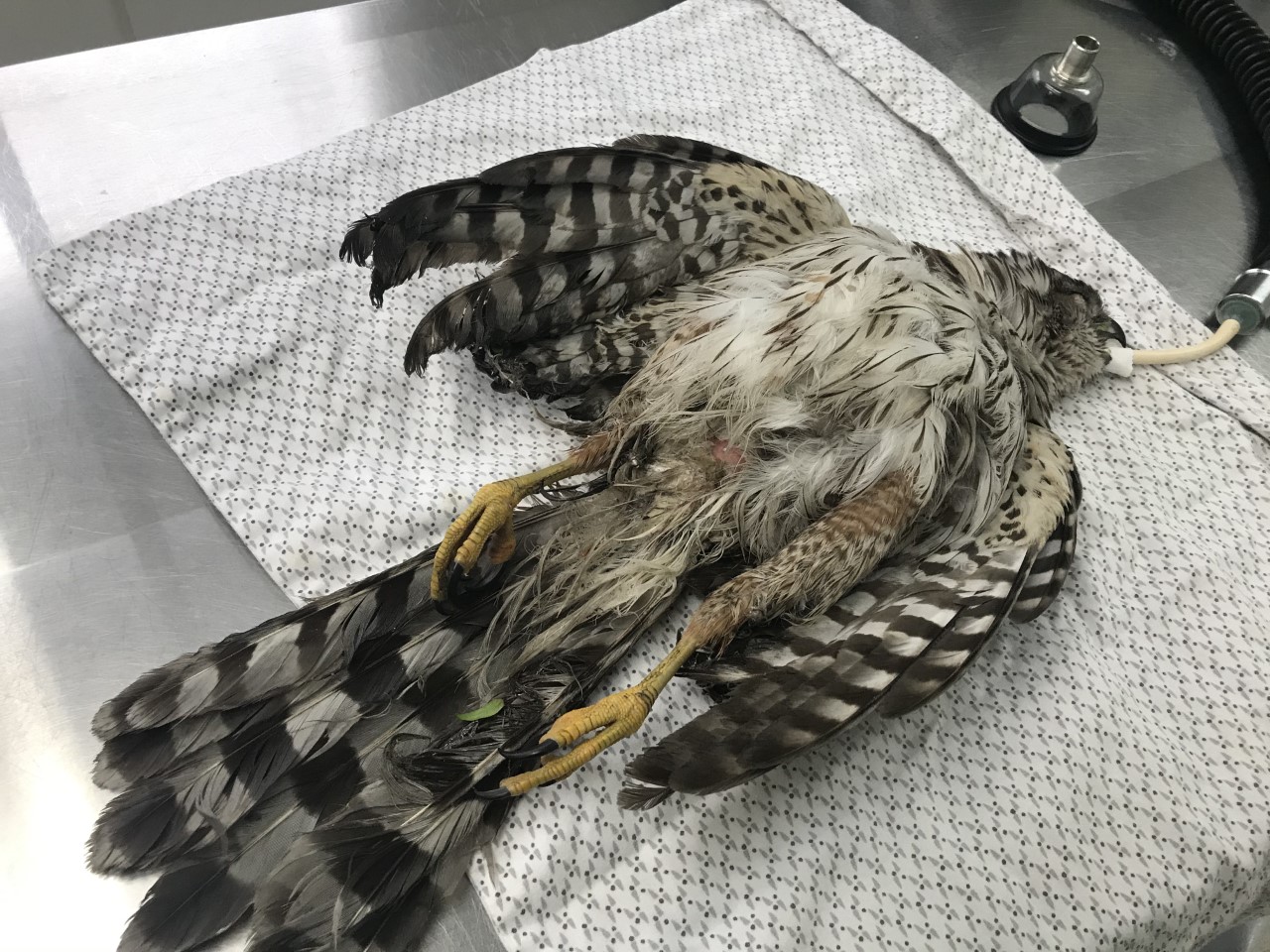
This Cooper’s Hawk was caught in a glue trap. Her feathers are all covered in glue and she had to be washed twice.
Glue traps cause a lot of harm to wildlife. While their intent is to trap rodents, a variety of other animals are also injured. In 2019, CWC treated 12 patients who were stuck to traps, including songbirds, reptiles, native rodents, and birds of prey. When glue traps are used, the ensnared animal suffers as it slowly dies of starvation.
How can you help?
Avoid using glue traps. If you want to rid your home of rodents, we recommend humane live traps where the animal can be relocated. If you find an animal stuck to a glue trap, contact CWC (310) 458-9453. Do not attempt to remove the animal from the trap as that may cause further harm to the animal.
Outdoor Cats
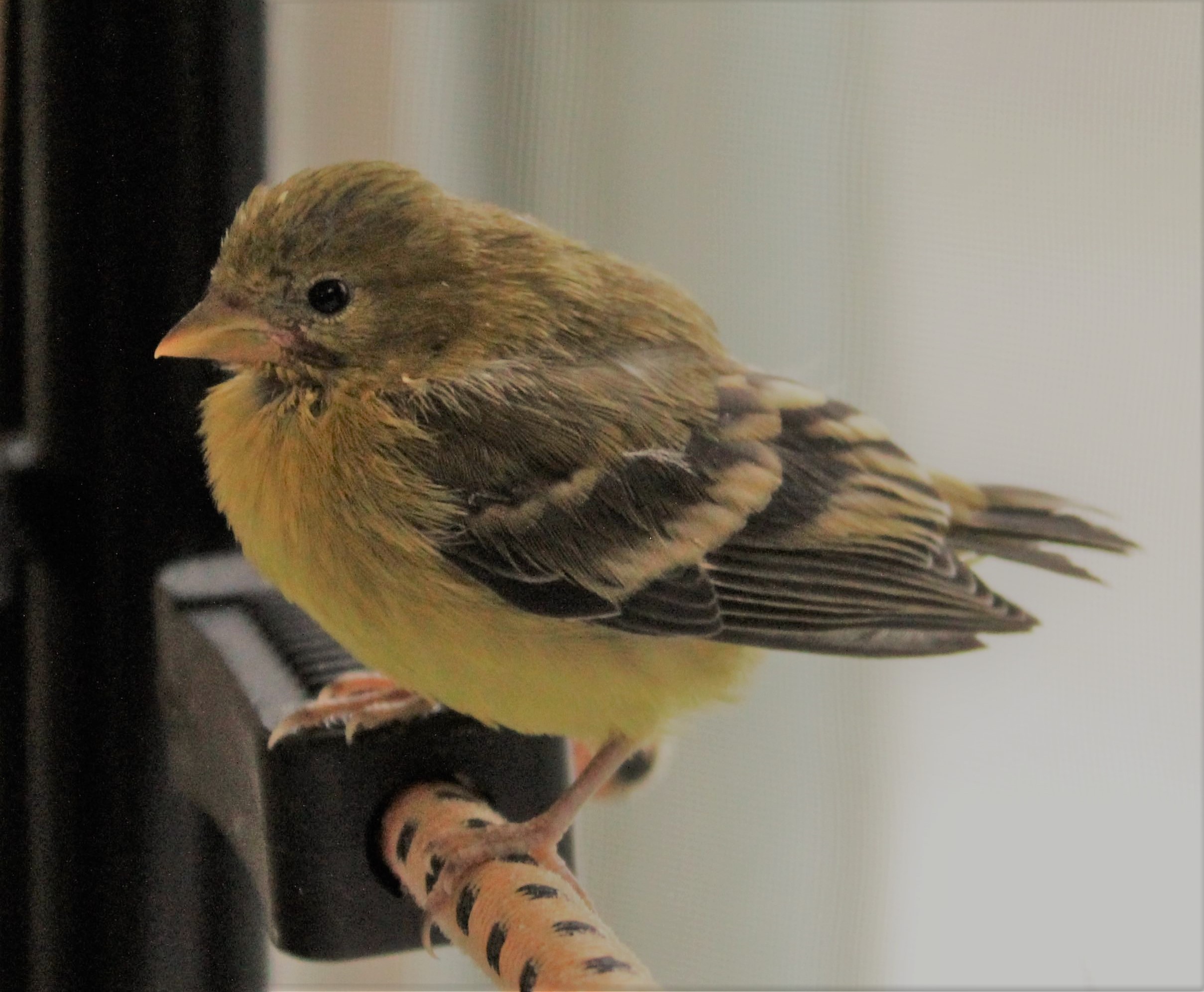 It is estimated that there are over 100 million free roaming domestic cats in the United States. These outdoor predators kill a shocking amount of birds. Approximately 2.4 billion birds are killed by cats each year. This is an unsustainable loss to many species. Cats have led to the extinction of 33 species of songbirds in recent history.
It is estimated that there are over 100 million free roaming domestic cats in the United States. These outdoor predators kill a shocking amount of birds. Approximately 2.4 billion birds are killed by cats each year. This is an unsustainable loss to many species. Cats have led to the extinction of 33 species of songbirds in recent history.
In 2019, CWC received 165 birds that were wounded by cat attacks. This number does not reflect the amount of birds that perished without ever being seen. Even if an attacked bird is able to escape, the bite itself can kill the bird later. Cat bites are so deadly because of the bacteria that lives in the cat’s mouth. Their sharp teeth are like mini-hypodermic needles that penetrate the flesh, causing the bacteria to be deposited very deep in the tissue. Any bird patient at CWC that is suspected of being caught by a cat immediately gets antibiotics.
Bells and colorful collars are sometimes touted as a way to protect birds from outside cats. These simply are not an option. A bird needs to know that the sound of a bell means danger to survive an attack. Bells have never been proven to eliminate the killing of birds, and young birds on the ground that are not yet able to fly are also not able to escape. Many songbirds learn how to fly from the ground up. They start off as tiny hatchlings and nestlings in the nest. As they grow bigger and their feathers begin to come in, they leave the nest, where they are sitting targets. Songbirds go to the ground and become fledglings. This stage can last for a week or so. These birds cannot fly quite yet. They hop along on the ground and find hiding places like shrubs and bushes. The mother knows the general area the fledglings are in, and she continues to deliver food to them. During this stage, songbirds are extremely vulnerable to unnatural predators such as cats. Bells and brightly colored collars are not effective if the bird cannot fly away. Entire generations of birds can be wiped out by the same cat.
How Can You Help?
The No. 1 way to curb our native bird species’ population decline is to keep cats inside. For those who have the available space in their home, a “catio” — a screened-in outside area where a cat can safely play outdoors — is a great option. There are many designs that can be found online, and they are relatively easy to build. Keeping cats inside also keeps the pet safe. Cars, coyotes and owls are just a few of the dangers with which outside cats must contend. Diseases, mange, worms, fleas and ticks are big problems for outside cats, too.
Feeding feral colonies causes cats to congregate and share food and water with each other and with wildlife, which can elevate disease transmission. In 2015, three times more cats than dogs tested positive for rabies in the U.S. For the sake of wildlife and for the health of pet cats, please keep them indoors and encourage others to do the same.
If you find an animal who has been caught by a cat, contact CWC at (310) 458-9453.
Trash Entanglement/Ingestion
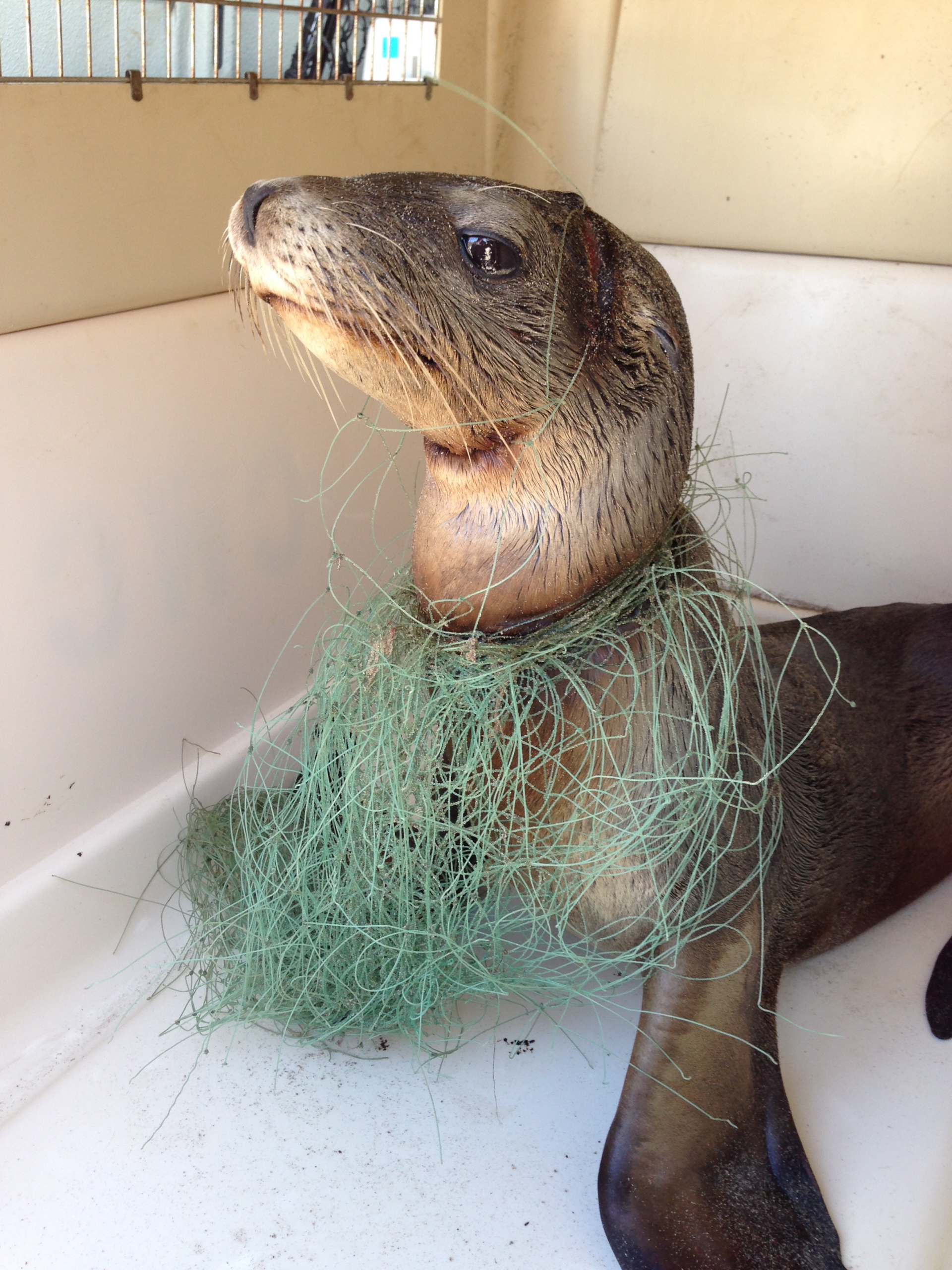 Every year, CWC sees a number of animals suffering from entanglement injuries from discarded trash. The most common are sea lions or water birds who have become tangled in fishing line. We have also treated a skunk with a plastic cup on his head, a deer with a PVC pipe stuck on his leg, and an owl who became trapped in a plastic shopping bag.
Every year, CWC sees a number of animals suffering from entanglement injuries from discarded trash. The most common are sea lions or water birds who have become tangled in fishing line. We have also treated a skunk with a plastic cup on his head, a deer with a PVC pipe stuck on his leg, and an owl who became trapped in a plastic shopping bag.
Unsecured garbage can also attract wildlife looking for a quick meal, which can cause accidental ingestion of trash. CWC has cared for many sea birds who have ingested lures and hooks left by fisherman. These foreign items have to be surgically removed from the unfortunate animals.
How Can You Help?
One easy way to help wildlife is to make sure your waste is secured in a covered container to prevent further entanglements. You can also pick up trash around your neighborhood or plan a community cleanup.
Habitat Loss
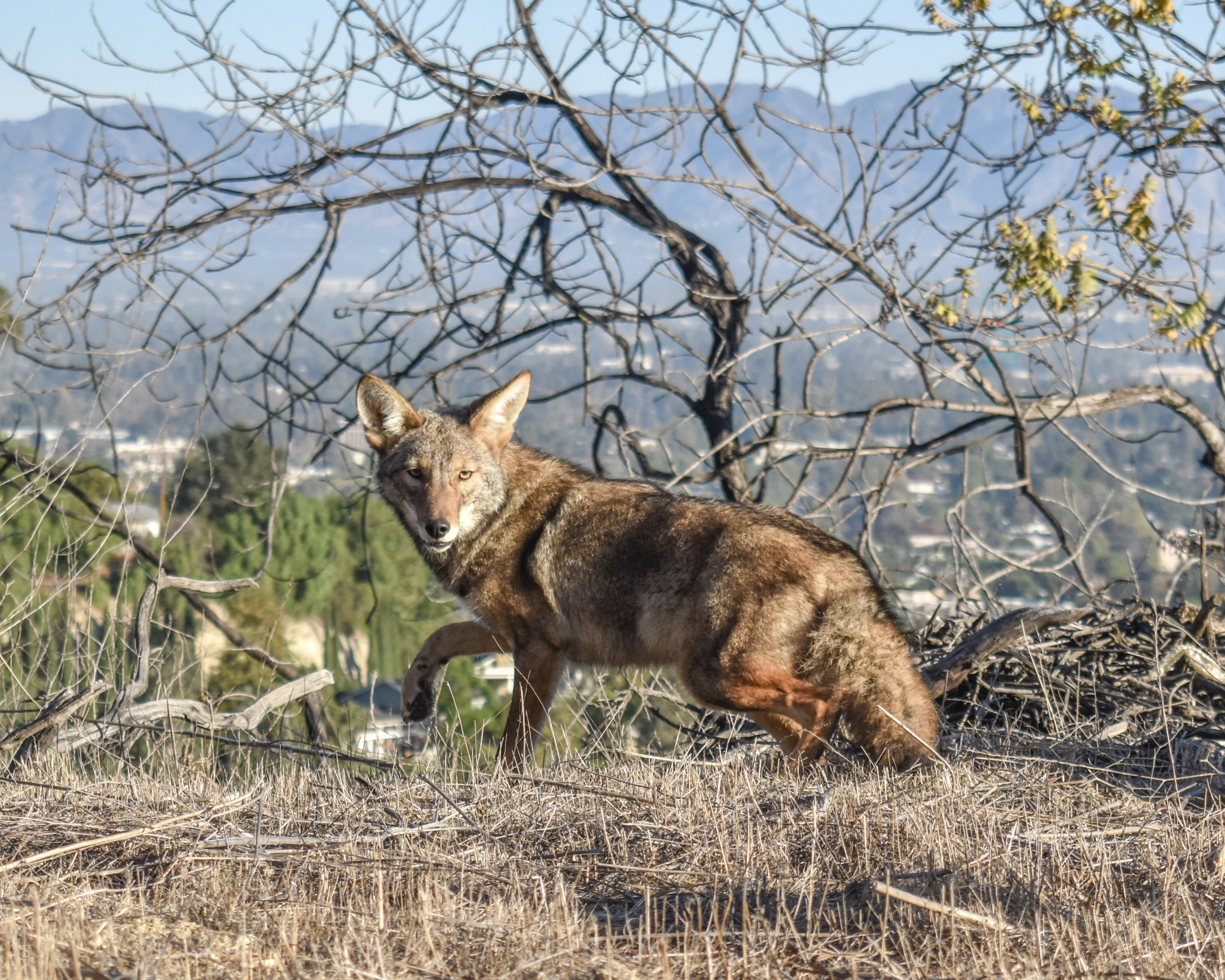 In the years from 2001 and 2011, 784 square miles of natural landscape in California was developed for human use. That is an area equivalent to the size of the Los Angeles Basin and San Fernando Valley combined. While some species are able to adapt to life in suburbia, there are countless others that cannot and risk extinction should the trend continue.
In the years from 2001 and 2011, 784 square miles of natural landscape in California was developed for human use. That is an area equivalent to the size of the Los Angeles Basin and San Fernando Valley combined. While some species are able to adapt to life in suburbia, there are countless others that cannot and risk extinction should the trend continue.
Common suburban visitors such as coyotes and raccoons are often vilified for being in neighborhoods, when the reality is, they often have nowhere else to go. Click here for more information about coexisting with coyotes.
How Can You Help?
Support the preservation of natural landscapes and wildlife preserves. It is also important to realize that some of the wildlife you are seeing in your neighborhood have nowhere else to go. An easy way to keep unwanted wildlife out of your yard, is to remove anything that may draw them in such as pet food, water sources, fallen fruit, and densely vegetated areas where they may hide. You can also discourage unwanted critters with motion sensor lights or sprinklers. Click here for other humane wildlife repellents.

